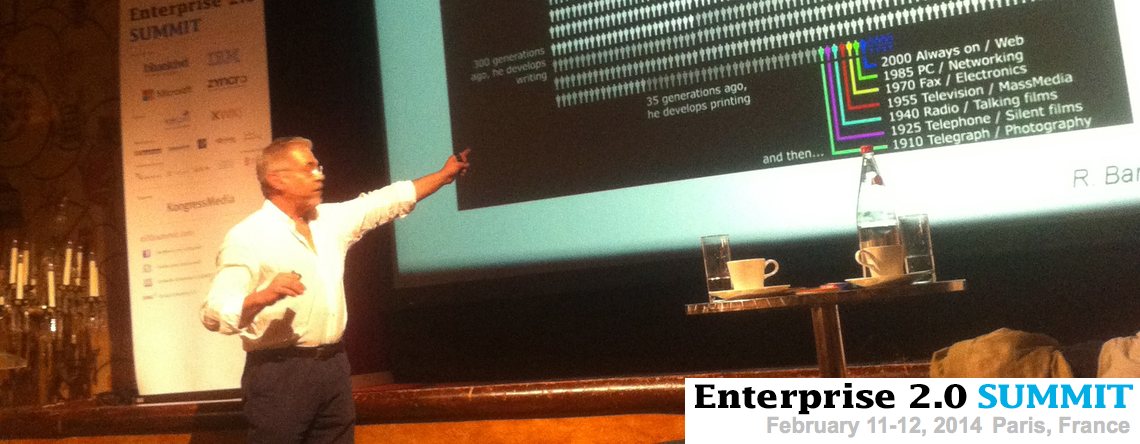 Yes!
Yes!
It’s almost a silly question to ask. Of course, we want employees to socialise, we even encourage it. There are company parties, at Christmas and New Years for instance. There’s the birthdays where we eat cake and have a chuckle or two.
In some cases employees are even encouraged to communicate with each other.., and very rarely, this even happens during office hours. But, not too long though, after all, how can you get any work done if you’re talking to somebody else.
I apologize for the sarcasm, I know it’s an easy way to poke at something. But, this still is, in many cases the daily order of business. You come to work to work, not to have fun, not be social, not to have a life other than the one dictated by HR and management.
And yet, by now, we know this is counter productive.
Flanders, Belgium
SD Worx (Dutch link) investigated and found that barely 1 in 3 employers lets its employees make use of Facebook, Twitter or LinkedIn. A quarter of employees isn’t even able to email outside work.
Dirk Van Bastelaere states, correctly, that the digitisation of the workplace is not keeping up with the rest of society. Folks, this is Social Business one-on-one.
Ironically, when it comes to controlling employees, digital is a favourite way to go. Time tracking (digitally) is implemented at over half of these companies, according to SD Worx.
Your Digital Self
Then there is your digital footprint, an irrevocable reflection of who you are. This is an excellent source for employers to keep an eye on their employees (those who call in sick should mind what they post on Facebook). It can even be in a very intrusive way for employers to check out potential applicants, which in some cases goes completely beyond any rational behaviour.
The trend seems to be that if a company can directly benefit from your social activity, it will not hesitate to do so. And when it feels there’s no upside, it will put up a Chinese Wall, just to keep things under control.
Either way, it’s about control. Or more to the point, fear of giving an employee too much freedom.
Backwards
From a societal and Social Business point of view, this is exactly the opposite of what we want to achieve.
There are arguments to be made for both opinions. However, a quick search favours opening up these platforms, research is being done on the subject.
However, I don’t want to go into a debate about statistics, I want to raise the point of the future of business.
Forwards
The point of a (truly) Social Business is keeping up with trends and developments in society, technology and work.
You, as a business, do not get to choose. You, as a business, get to adept.
Meaning, as a business, you do not create these trends and developments, at least, most businesses don’t. A company like IBM is setting the trend on how to be a social business. However, they do no control society or technological developments, they adept to them.
For a business to stay relevant in an ever changing society and faster technological advancements, you need to keep up. You need to embrace and implement changes.
Pitfalls
Sure, there are plenty.
Some employees will spend to much time on social platforms.
Some employees will infect their PC with malware.
Some employees will cyber bully a colleague.
Some employees will (inadvertently) leak sensitive material.
And so on…
But, let’s face it, this is nothing new. With every new development there is a potential downside. This doesn’t mean you block it or worse, ignore it. No, you adept to it.
History shows that companies which do not adept quickly enough, die.
The flip side; companies which do adept, thrive.
Guidance
In my opinion, companies should open up. Employees should be able to use their social networks, professional and personal. For starters, one makes them more valuable, the other happier.
But, I strongly encourage to provide as much guidance as possible.
Not everybody gets social. They might not see the big picture, do not understand what consequences their actions might have. A single Tweet can be very destructive.
Instructing employees on the proper use of social can stimulate them in building a stronger professional network (i.e. use LinkedIn or start blogging). Or, be more effective in keeping their use under control (i.e. teach them how to use Hootsuite).
Social platforms are very powerful tools. Tools which more and more people use, some very effectively. When a business ignores this, shunts it, it will miss out on the most powerful and fundamental change our society is going through since we figured out how to tell a story.
I could go on, but a decade from now, the term Social Business won’t exist any more. It’ll just be Business. And either you still exist, or you don’t. It really is up to you.
Pressure
A dam is build to take a tremendous amount of pressure. It’s designed to do this. However, to much pressure and the dam brakes.
Modern society is putting a lot of pressure on current business and its leaders. A whole lot. It’s not easy, in fact, quite the opposite, it’s hard.
This time is one of the most difficult for (top)managers. You cannot ignore the future, you can’t shut it out.
You have to acknowledge the heavy rain that is filling up your reservoir, and a controlled trickle is far better than an uncontrolled deluge. At some point you have to adept, change, open up.
If you don’t.., the dam will burst.


 I was going through some photo’s of
I was going through some photo’s of 


 Olivier
Olivier Celine
Celine Dan
Dan